Beryllium-Determining in Coal by Graphite Furnace Atomic Absorption Spectrometry with Lanthanum Nitrate as Matrix Modifier
-
摘要: 应用石墨炉原子吸收光谱法(GFAAS)测定煤、地球化学样品、土壤、空气等不同基质中的铍, 关键是基体改进剂的选择问题.本文采用一体化平台石墨管, 通过缓慢升温燃烧灰化煤炭样品, 在硝酸介质中, 比较了7种基体改进剂(硝酸镧、硝酸镁、硝酸铝、磷酸氢二铵、氯化钯、碳酸钙、酒石酸)对煤样中铍的增敏效果, 同时探讨了基体干扰及消除的问题.实验结果表明, 在2%的硝酸介质中, 以硝酸镧为基体改进剂, 石墨炉灰化温度提高到1100℃, 原子化温度仅为2300℃时, 即可消除基体中铝、铁、钙、镁、磷等共存元素的干扰.铍的浓度在0~8 μg/L范围内线性关系良好, 方法检出限为0.008 μg/g, 定量限为0.025 μg/g, 精密度(RSD, n=11) 为1.8%~2.8%, 标准样品的测定值在给定值的误差范围内.其作用机理是镧与干扰元素结合生成了热稳定的难熔、难蒸发、难解离的化合物, 将铍释放出来, 镧起到既提高灰化温度, 又相对降低原子化温度的双重作用, 消除了基体干扰的同时, 又延长了石墨管使用寿命.本方法操作简单, 无需对石墨管预处理, 降低了检测成本, 具有很强的稳定性和适应性, 适用于煤中铍的测定.Abstract: The key to beryllium-determining in coal, geochemical samples, soil, air and other different substrates by Graphite Furnace Atomic Absorption Spectrometry (GFAAS) is to choose a proper matrix modifier. The coal sample is slow burning ashed and then determined by integration platform graphite tube. In this paper, the sensitization effect of seven kinds of matrix modifier (lanthanum nitrate, magnesium nitrate, aluminum nitrate, diammonium phosphate, palladium chloride, calcium carbonate, tartaric acid) to beryllium in nitric acid solution is contrasted, and the elimination of matrix interference is discussed. The experimental results show that the interference of coexisting elements, such as aluminum, iron, calcium, magnesium and phosphorus, are eliminated under the condition of 2% nitric acid medium, lanthanum nitrate as matrix modifier, 1100℃ of ashing temperature and 2300℃ of atomization temperature. The limit of detection is 0.008 μg/L, the limit of quantification is 0.025 μg/L and the linear measurement is 0-8 μg/L. The RSD (n=11) of standard determination is 1.8%-2.8%, the measured values of standards are within the given range. The mechanism is lanthanum and interference elements combined to generate the thermal stability of refractory are indissoluble and difficult to evaporate to release beryllium. Lanthanum can not only improve the ashing temperature, but can also lower the atomization temperature to eliminate the matrix interference and prolong the service life of the graphite tube. This method is simple and less expensive than traditional methods, with strong stability and adaptability, and without pretreatment of graphite tubes. It is suitable for the determination of beryllium in coal.
-
锂同位素研究是非传统稳定同位素地球化学研究的前沿。锂具有诸多独特的地球化学特性,主要表现在:① 锂是一种碱金属元素,具有与镁离子相近的离子半径(rMg2+≈0. 57Å,rLi+≈0. 59Å),在晶格中Li+可以替代Mg2+,即能够与镁发生类质同象替代[1, 2];② 锂在地幔部分熔融和岩浆结晶过程中为中等不相容元素[2, 3],在地幔和地壳中广泛分布;③ 锂离子具有高电离电势,在流体相中可发生强烈的水合作用,具有强烈的流体活动性[1, 2, 3, 4];④ 锂不是生物或大气循环过程的重要组成部分(与C、O、N不同)[5, 6];⑤ 锂的两种稳定同位素6Li和7Li,同位素丰度分别为7.52%和92.48%,相对质量差达16.7%,在地表发生强烈的同位素分馏作用。这些特性使锂同位素成为一个良好的地球化学示踪工具,其应用领域涵盖了从地表到地幔的流体与矿物之间的相互作用[7, 8, 9],可用于示踪地表水地球化学过程[10, 11, 12]、陆壳风化过程[13, 14, 15]、洋壳热液活动及蚀变[4, 16, 17]、板块俯冲及壳幔物质循环[18, 19, 20]、卤水来源与演化[21, 22, 23]、水体污染[24, 25]等重要的地质过程。
目前,国内外实验室已开发了多接收器电感耦合等离子体质谱法(MC-ICP-MS)[5, 26, 27, 28, 29, 30, 31]、热电离质谱(TIMS)[32, 33, 34, 35, 36]、二次离子质谱(SIMS)[37, 38, 39, 40]等多种锂同位素比值测量方法,在锂同位素地球化学研究方面取得了突破性进展。早期一些学者使用δ6Li(‰),即[(6Li/7Li)样品/(6Li/7Li)标准-1]×1000表示锂同位素组成[34, 41],为避免混乱,同位素丰度和原子量委员会(简称CIAAW)推荐使用δ7Li(‰),即[(7Li/6Li)样品/(7Li/6Li)标准-1]×1000,表示锂同位素组成,并以L-SVEC作为标准(δ7LiL-SVEC=0)[42],特别是在2002年Goldschmidt会议后,研究者开始按约定执行。
稳定同位素测试需要通过与标准物质的对比,确定样品的同位素组成,通过地质标准物质监控化学分析和质谱测试流程,评估分析不确定度和稳定性,以便各个实验室间进行数据比较[43, 44, 45]。目前国际上通用的锂同位素标准参考物质是欧盟参考物质及测量研究所(IRMM)研制的纯碳酸锂IRMM-016和美国国家标准技术研究院(NIST)研制的纯碳酸锂L-SVEC,两者的锂同位素组成基本一致。本文选用IRMM-016、L-SVEC和玄武岩标样BHVO-2、JB-2和BCR-2,安山岩标样AGV-2和霞石岩标样NKT-1,对这7种常用地质标准物质采用硝酸-氢氟酸混合酸进行消解,通过3根阳离子交换树脂(AG50W-X8, 200~400目)填充的聚丙烯交换柱和石英交换柱对锂进行分离富集,利用Neptune型多接收器电感耦合等离子体质谱(MC-ICP-MS)测定各标准物质的锂同位素比值,使用标准-样品交叉法(Standard-Sample-Bracketing,SSB)校正仪器的质量分馏。同时,在基质效应的研究中,使用不同量的IRMM-016配制的标准溶液过柱,深入探讨了样品量对锂同位素测定值的影响,所获得的锂同位素数据与国外发表的数据进行比较,进一步证明本实验室的锂同位素分析方法的可靠性[46, 47, 48, 49, 50],也为建立统一的锂同位素分析标准方法奠定基础。这7种常用地质标准物质(BHVO-2、JB-2、BCR-2、AGV-2、NKT-1、L-SVEC、IRMM-016) 锂同位素组成覆盖范围较大(0‰~10‰),属于几种不同的母岩基质,涵盖了火成岩的主要岩石类型,若确定了它们的锂同位素组成,将为今后的研究提供参考基准。
1. 实验部分
1.1 仪器
锂同位素组成测试分析在国土资源部同位素地质重点实验室的Neptune型多接收器电感耦合等离子体质谱仪(MC-ICP-MS)上完成。该仪器配置9个法拉第杯和5个离子计数器。8个法拉第杯配置在中心杯两侧,以马达驱动进行精确的位置调节;中心杯后装有1个电子倍增器,最低质量数杯外侧装有4个离子计数器。MC-ICP-MS为双聚焦型(能量聚焦和质量聚焦)质谱仪,采用动态变焦(ZOOM)专利技术,可将质量色散扩大至17%。样品雾化后进入该公司生产的稳定进样系统(Stable Introduction System,SIS),这种稳定进样系统是气旋和斯克特雾化器的结合,可以提供更为稳定的信号并缩短清洗时间[51]。
1.2 实验室器皿及主要试剂
样品的前处理工作在国土资源部同位素重点实验室的超净实验室完成,实验室洁净度为千级,超净工作台洁净度为百级。
实验流程中所用器皿均为聚丙烯或聚四氟乙烯材料,采用严格的清洗流程,以降低器皿的本底:初次水洗—优级纯硝酸(7 mol/L)浸泡—超纯水清洗、浸泡—优级纯盐酸(6 mol/L)浸泡—超纯水清洗、浸泡—烘干备用。
实验所用超纯水由Millipure纯化制得,电阻率为18.2 MΩ·cm。
主要的化学试剂有盐酸、硝酸、氢氟酸以及无水乙醇,其中盐酸、硝酸、氢氟酸均由MOS级纯酸经过Savillex DST-1000亚沸蒸馏系统二次蒸馏所得;乙醇为MOS级纯试剂,纯度为99.9%。
1.3 实验样品及样品准备流程
在样品量大小对锂同位素测定值影响的实验中,选用国际锂标准物质IRMM-016配制的溶液为原始溶液,介质为2%硝酸,浓度为1 μg/mL(1 ppm)。分别取0.1、0.2、0.4、0.6、0.8、1.0、2.0、4.0、8.0、10.0 mL原始溶液放入聚四氟乙烯溶样瓶中,放置在电热板上蒸干。加入浓盐酸转化为盐酸介质后蒸干,加入4 mol/L盐酸溶解样品。分别配制成1 mL 0.1、0.2、0.4、0.6、0.8、1.0、2.0、4.0、6.0、8.0、10.0 μg/mL的IRMM-016溶液,以备上柱。样品的分离纯化步骤参照苏嫒娜等[49]及Tian等[50]的描述。
选用国土资源部同位素地质重点实验室的实验室标准溶液CAGS-Li(以北京钢铁研究总院制备的GSBG62001-90单元素锂标准溶液为原始溶液,介质为10%盐酸,浓度为1000 μg/mL,取适量的原始溶液蒸干转换为2%硝酸介质,并稀释至100 μg/L)测定实验精度。
本文涉及的常用地质标准物质BHVO-1、BHVO-2、JB-2、BCR-2、AGV-1、AGV-2的相关化学组成见表 1。岩石样品的分解步骤参照苏嫒娜等[49]及Tian等[50]的描述。
表 1 BHVO-1、BHVO-2、JB-2、BCR-2、AGV-1和AGV-2标准样品化学成分参考值Table 1. Reference values of components in standard sample BHVO-1, BHVO-2, JB-2, BCR-2, AGV-1 and AGV-2标准样品 含量 含量(μg/g) SiO2 Al2O3 CaO MgO Na2O K2O TFe2O3 P2O5 TiO2 Li BHVO-1 49.94 13.80 11.40 7.23 2.26 0.52 12.23 0.27 2.71 4.60 BHVO-2 49.90 13.50 11.40 7.23 2.22 0.52 12.30 0.27 2.73 5.00 JB-2 53.25 14.64 9.82 4.62 2.04 0.42 14.25 0.10 1.19 7.78 BCR-2 54.10 13.50 7.12 3.59 3.16 1.79 13.80 0.35 2.26 9.00 AGV-1 58.84 17.15 4.94 1.53 4.26 2.92 6.77 0.50 1.05 12.00 AGV-2 59.30 16.91 5.20 1.79 4.19 2.88 6.69 0.48 1.05 11.00 注:BHVO-1、BHVO-2、BCR-2、AGV-1和AGV-2参考值来自于美国地质调查局分析证书(http://crustal.usgs.gov/geochemical_reference_standards/powdered_RM.html);JB-2参考值来自于Imai et al.(1995)[52]。 1.4 锂的分离纯化
分离实验中所用的离子交换柱有3组,第一组和第二组采用Bio-Rad公司生产的聚丙烯柱,第三组为石英柱,每组为16根,分别填充1.2、1.5和1.0 mL AG50W-X8阳离子交换树脂(200~400目),分别除去样品中的主量、微量和钠元素。本方法是在马里兰大学Rudnick教授的Li同位素化学分离流程的基础上,将第一根阳离子交换柱的淋洗液浓度略微提高,并适量提高每根交换柱的阳离子树脂充填量,从而提高了交换效率。淋洗液体积由59 mL减少为36 mL,在保证回收率的前提下使得分离流程更短。Li离子交换分离流程见表 2,具体步骤参照苏嫒娜等[49]及Tian等[50]的描述。
表 2 Li离子交换分离流程Table 2. Protocols of ion-exchange chromatographic conditions for Li离子交换
分离步骤淋洗液 淋洗体积
(mL)上柱1 4 mol/L盐酸 1 淋洗 2.8 mol/L盐酸 5 收集 - 6 蒸干 - - 上柱2 0.15 mol/L盐酸 2 淋洗 0.15 mol/L盐酸 21 收集 - 21 蒸干 - - 上柱3 0.15 mol/L盐酸 1 淋洗 0.5 mol/L盐酸-30%乙醇 9 收集 - 9 蒸干 - - 1.5 流程本底实验
在分离样品时,同时做了流程本底实验。在相同实验环境下,使用AG50W-X8阳离子交换树脂(200~400目),按照空白样品全流程淋洗Li。将所得的接收液,按照样品处理流程蒸干后转换为2%硝酸介质,用MC-ICP-MS的离子计数器采集信号。
1.6 锂同位素质谱测定和质量监控
所有样品的锂同位素比值均使用Neptune型MC-ICP-MS仪器测试,进样浓度约为100 μg/L,介质为2%硝酸。样品通过雾化器引入氩等离子区,7Li的信号为5 V左右。7Li和6Li分别使用法拉第杯H4和L4同时测量。仪器工作参数为:RF功率1200 W,冷却气约15 L/min,辅助气约0.6 L/min,载气约1.15 L/min,雾化器类型为Menhard雾化器(50 μL/min),分析器真空度4×10-9~8×10-9 Pa[49]。工作参数因仪器状态有时会做少许调整,但一般变化不大。为精确测试,仪器需要1~2 h才能达到充分稳定。在整个测试过程中,仪器工作条件和样品信号都比较稳定。在分析过程中,采用标准-样品交叉法(SSB)来校正仪器的质量分馏,标准样品和样品进样溶液的浓度相对偏差控制在10%以内。
测定样品之前,将仪器调至最佳工作状态下,先测定实验室标准溶液CAGS-Li或者国际锂标准物质IRMM-016配制的标准溶液的同位素丰度比值,待7Li/6Li比值稳定,实验室标样测定数据稳定在长期监测范围内或者IRMM-016的同位素比值在误差范围内与真值一致,方可进行样品测试。
样品测定采用自动进样,每组数据采集前需进行20 s的背景测定。测试结果表示为:δ7LiL-SVEC =[(RSP/RST)-1]×1000‰+δ7LiIRMM-016-L-SVEC,其中RSP为样品7Li/6Li比值的测定值,RST为与样品相邻的2次标样7Li/6Li比值测定值的平均。测样时每组收集20个数据,共采集2~4组数据,7Li/6Li测量精度≤±0.2‰(2SD)。样品与标准样品之间用2%硝酸清洗系统约2 min,将信号洗至本底范围内。
2. 锂同位素组成分析结果与讨论
2.1 测定精度
以制备的实验室标准溶液CAGS-Li对标准物质IRMM-016进行测定用来评估δ7Li值的外精度。本次实验测定δ7LiCAGS-Li -L-SVEC=14.9‰±0.5‰ (2SD,n=12,图 1),各国际常用岩石标准过柱后的长期监测精度(2SD)也均优于1‰(表 3)。
表 3 本实验室国际标准样品的锂同位素组成长期测定结果与文献发表数据的对比Table 3. Comparison of Li isotopic ratio in IMR-CAGS over a three-year period and reported values in literatures标准物质 标物所属单位 标物属性
及产地Li含量(10-6)
GeoReMc
推荐值δ7Li(‰)
(2SD)测试方法 参考文献 BHVO-1 USGS 玄武岩
(夏威夷)4.6 5.60±0.55(n=5) MC-ICP-MS Schuessler et al.(2009)[31] 4.68±0.16(n=2) MC-ICP-MS Rosner et al.(2007)[30] 4.3±1.0(n=1) MC-ICP-MS Rudnick et al.(2004)[29] 5.31±0.18(n=1) MC-ICP-MS Magna et al.(2004)[28] 5.0±1.5(n=8) MC-ICP-MS Bouman et al.(2004)[53] 5.2±0.5(n=?) TIMS-磷酸锂 Chan and Frey(2003)[35] 5.1±1.1(n=2) MC-ICP-MS Pistiner and Henderson(2003)[54] 5.8±1.8(n=3) TIMS-磷酸锂 James and Palmer(2000)[34] 4.0~5.8(n=15) - 来自GeoReMc (georem.mpch-mainz.gwdg.de/) BHVO-2 USGS 玄武岩
(夏威夷)5.0 4.7±0.2(n=26) MC-ICP-MS Pogge von Strandmann et al.(2011)[55] 4.8±0.2(n=15) MC-ICP-MS Marschall et al.(2007)[56] 4.43±0.41(n=2) MC-ICP-MS Magna et al.(2006)[57] 4.7±0.2(n=2) MC-ICP-MS Kasemann et al.(2005)[36] 4.66±0.2(2SE, n=8) MC-ICP-MS Jeffcoate et al.(2004)[58] 4.55±0.29(n=9) MC-ICP-MS Magna et al.(2004)[28] 4.5±1.0(n=?) MC-ICP-MS Zack et al.(2003)[17] 4.46~5.5(n=36) - 来自GeoReMc (georem.mpch-mainz.gwdg.de/) BHVO-2 USGS 玄武岩
(夏威夷)5.0 4.7±1.0(n=53) MC-ICP-MS 本实验室 JB-2 GSJ 玄武岩
(日本)7.8
4.9±0.3(n=24)MC-ICP-MS Pogge von Strandmann et al.(2011)[55] 5.0±0.3(n=14) MC-ICP-MS Marschall et al.(2007)[56] 4.31±0.69(n=2) MC-ICP-MS Rosner et al.(2007)[30] 4.79±0.29(n=4) MC-ICP-MS Magna et al.(2006)[57] 5.2±?(n=?) MC-ICP-MS Seitz et al.(2004)[59] 4.70±0.29(n=10) MC-ICP-MS Magna et al.(2004)[28] 4.3±0.3(n=8) MC-ICP-MS Jeffcoate et al.(2004)[58] 4.0±1.0(n=1) MC-ICP-MS Rudnick et al.(2004)[29] 3.9±0.4(n=1) MC-ICP-MS Pistiner and Henderson(2003)[5] 4.7±1.0(n=?) MC-ICP-MS Zack et al.(2003)[17] 5.1±0.4(n=?) TIMS-磷酸锂 Chan and Frey(2003)[35] 4.29±0.34(n=5) MC-ICP-MS Nishio and Nakai(2002)[27] 5.1±0.4(n=7) TIMS-磷酸锂 Chan et al.(2002)[41] 6.8±0.3(n=3) TIMS-磷酸锂 James and Palmer(2000)[34] 5.1±1.1(n=4, 13data) MC-ICP-MS Tomascak et al.(1999)[26] 4.9±0.7(n=5) TIMS-磷酸锂 Moriguti and Nakamura(1998)[33] JB-2 GSJ 玄武岩
(日本)7.8 4.9±1.0(n=20) MC-ICP-MS 本实验室 BCR-1 USGS 玄武岩 12.9±2.0 2.0±0.7(n=10) MC-ICP-MS Teng et al.(2006)[60] 2.38±0.52(n=2) MC-ICP-MS Magna et al.(2004)[28] 2.7±1.0(n=3) MC-ICP-MS Rudnick et al.(2004)[29] 2.0~3.0(n=8) - 来自GeoReMc(georem.mpch-mainz.gwdg.de/) BCR-2 USGS 玄武岩 9.0±2.0 2.6±0.3(n=17) MC-ICP-MS Pogge von Strandmann et al.(2011)[55] 2.87±0.39(n=2) MC-ICP-MS Rosner et al.(2007)[30] 4.4±0.3(n=?) - 来自GeoReMc平均值 2.6~7.1(n=11) - 来自GeoReMc(georem.mpch-mainz.gwdg.de/) BCR-2G USGS 玄武质
玻璃9.0±2.0 5.0±0.8(n=?) MC-ICP-MS le Roux et al.(2010)[39] 4.1±1.6(n=?) SIMS le Roux et al.(2010)[39] 4.0±0.6(n=?) TIMS-磷酸锂 le Roux et al.(2010)[39] 4.08±0.1(n=?) MC-ICP-MS Kasemann et al.(2005)[36] 4.0±0.8(n=?) SIMS le Roux et al.(2010)[39] 4.5±0.6(n=?) - 来自GeoReMc平均值 4.0~5.0(n=7) - 来自GeoReMc(georem.mpch-mainz.gwdg.de/) BCR-2 USGS 玄武岩 9.0±2.0 4.4±0.8(n=8) MC-ICP-MS 本实验室 AGV-1 USGS 安山岩 12.0 4.93±1.0(n=?) MC-ICP-MS 马里兰大学实验室Tian et al.(2012)[50] 6.74±0.2(n=1) MC-ICP-MS Magna et al.(2004)[28] 4.6~6.74(n=2) - 来自GeoReMc(georem.mpch-mainz.gwdg.de/) AGV-2 USGS 安山岩 11.0 5.68±1.04(n=10) MC-ICP-MS 本实验室, Tian et al.(2012)[50] 8.14±0.66(n=2) MC-ICP-MS Magna et al.(2006)[57] 7.94±0.64(n=6) MC-ICP-MS Magna et al.(2004)[28] AGV-2 USGS 安山岩 11.0 6.1±0.4(n=14) MC-ICP-MS 本实验室 NKT-1 - 霞石岩 - 8.7±0.5(n=4) MC-ICP-MS 本实验室, 苏嫒娜等(2011)[49] 9.8±0.2(n=3) MC-ICP-MS 本实验室 L-SVEC NIST
RM 8545纯碳酸锂 约100% 0±2.4(n=?) - Carignan et al.(2004)[61] 0.0±0.03(2SE,n>60) MC-ICP-MS Jeffcoate et al.(2004)[58] 0.2±0.82(n=2) MC-ICP-MS Nishio and Nakai(2002)[27] L-SVEC NIST 纯碳酸锂 约100% 0.2±0.3(n=16), 未过柱 MC-ICP-MS 本实验室 -0.3±0.3(n=10), 过柱 MC-ICP-MS 本实验室 IRMM-016 IRMM 纯碳酸锂 约100% -0.2±0.5(n=38), 未过柱 MC-ICP-MS Qiu et al.(2009)[62] 0.14±0.20(n=2) MC-ICP-MS Kasemann et al.(2005)[36] -0.50±0.13(n=2) TIMS-磷酸锂 Kasemann et al.(2005)[36] 0.14±0.04(2SE,n=34) MC-ICP-MS Jeffcoate et al.(2004)[58] 0.2±0.24(n=52) MC-ICP-MS Millot et al.(2004)[63] -0.1±0.2(n=50) 未过柱 MC-ICP-MS Teng et al.(2004)[64]; Rudnick et al.(2004)[29] 0.15±1.0(n=15) MC-ICP-MS Zack et al.(2003)[17] -0.01±0.60(n=?) - 来自GeoReMc平均值 IRMM-016 IRMM 纯碳酸锂 约100% -0.1±0.3(n=20), 未过柱 MC-ICP-MS 本实验室 0.0±0.5(n=10), 过柱 MC-ICP-MS 本实验室 CAGS-Li 国家钢铁材料
测试中心
钢铁研究总院GSBG62001-90
锂标准溶液1000 μg/mL
(介质10%盐酸)14.9±0.5(n=12) MC-ICP-MS 本实验室 注:“?”表示参考文献中未注明的测试精度或数据个数;表中未注明的或者参考文献中就未说明的测试精度以2SD表示,有些文献中用2SE表示测试精度,本文直接引用以2SE标注,SD表示标准偏差,SE表示标准误差 
2.2 流程本底
标样和样品中Li的浓度均为100 μg/L,7Li的信号强度约为5 V,流程本底的信号强度约0.0050 V,实验测得Li的流程本底为1.0×10-10 g。因此,当Li的样品量为0.1~10.0 μg时,流程本底所占的比例为0.001%~0.1%,可以忽略流程本底对锂同位素组成的影响。
2.3 锂同位素组成长期测定结果
锂同位素分析中的样品消解、化学分离、质谱测试等过程,使用的多种试剂和器皿以及分析者的各项操作等环节都有可能导致同位素结果发生改变,因此需要通过标准样品检测判断样品分析流程的可靠性,进行质量监控。
将7种常用地质标准物质经过消解、化学分离后得到的纯锂接收液加热蒸干后,转化成2%硝酸介质,配制成与标准溶液浓度匹配的测试液(见1.6节),进行锂同位素组成测定。实验得到近3年来BHVO-2、JB-2、BCR-2、AGV-2、NKT-1、L-SVEC、IRMM-016标准样品的锂同位素组成与测试精度(2SD)测定结果分别为(图 2和图 3):δ7LiBHVO-2—L-SVEC=4.7‰±1.0‰(n=53),δ7Li JB-2—L-SVEC=4.9‰±1.0‰(n=20),δ7LiBCR-2—L-SVEC=4.4‰ ±0.8‰(n=8),δ7LiAGV-2—L-SVEC=6.1‰±0.4‰(n=14),δ7LiNKT-1—L-SVEC=9.8‰±0.2‰(n=3),δ7LiL-SVEC—L-SVEC= 0.2‰±0.3‰(n=16,未过柱);δ7LiL-SVEC—L-SVEC=-0.3‰±0.3‰(n=10,过柱),δ7LiIRMM-016—L-SVEC=-0.1‰±0.3‰(n=20,未过柱);δ7LiIRMM-016—L-SVEC=0.0‰±0.5‰(n=10,过柱)。
由BHVO-2、JB-2、BCR-2的锂同位素组成可知,不同的玄武岩的锂同位素组成存在一定差异,但差异不大。δ7LiBHVO-2在3.7‰~5.7‰之间变化,δ7LiJB-2在4.1‰~5.8‰之间变化,δ7LiBCR-2在3.8‰~5.0‰之间变化(图 2)。BHVO-2的δ7Li值波动较大,BHVO-2在蒸干的过程中稍有不慎蒸得过干,则下一步极难溶解。在样品消解和化学分离过程中需要十分注意:在第一步用浓硝酸和浓氢氟酸消解样品蒸干赶酸的过程中,温度需低于110℃,避免蒸得过干,操作不慎造成损失。在分离流程蒸干时温度也要低于110℃,避免蒸得过干。因为每蒸干一次用于溶解样品和淋洗洗脱的酸浓度就更低,以免出现接收物不完全溶解而造成锂同位素分馏。JB-2和BCR-2较BHVO-2更易溶解,且锂同位素测试结果较BHVO-2更为稳定,本文认为更适合作为玄武岩的锂同位素标准样品。
3. 锂同位素组成测定结果与国外实验室发表的数据比较
表 3汇总了本实验室近3年来测定的7种常用锂同位素标准物质的平均值(具体数据信息见图 2)和文献报道的同种标准物质锂同位素组成测定值(表 3),它们在误差范围内是相同的。对国际常用锂同位素标准物质的测试结果表明,本实验室建立的Li同位素分析方法是可靠的[本文在进行数据比较时,已将前人发表的δ6Li数据统一转化为δ7Li(δ7Li≈-δ6Li)]。
BHVO-2、BCR-2、AGV-2分别是在BHVO-1、BCR-1、AGV-1售罄后推出的,前后二者是同一物质,只是分装先后不同,其化学成分基本相同(表 1),同位素组成在误差范围内也基本相同(表 3)。在3种玄武岩标样BHVO-2、JB-2和BCR-2中,本实验室分析最多的是BHVO-2。
对于玄武岩标样BHVO-2,本实验室测定的δ7Li值波动较大,在3.7‰~5.7‰之间变化(图 2),国外实验室已发表的BHVO-1数据差异也大,如GeoReMc数据库统计数据δ7LiBHVO-1在4.0‰~5.8‰之间变化(表 3),表明本实验室数据波动范围和测定平均值均与已发表数据相符(表 3)。本实验室在分析精度上(2SD),近3年来全流程分析(包括消解、分离和MC-ICP-MS测试)的53个BHVO-2样品的锂同位素组成与测试精度(2SD)为:δ7LiBHVO-2—L-SVEC=4.7‰±1.0‰(n=53),在2011年8月29日和2013年5月6日分别进行了两批(每批10个)BHVO-2样品的锂同位素分析(图 2),锂同位素组成与测试精度(2SD)分别为δ7LiBHVO-2—L-SVEC=4.6‰±0.5‰(n=10) 和δ7LiBHVO-2—L-SVEC=5.0‰±0.6‰(n=10),因此目前溶液进样MC-ICP-MS测定的锂同位素分析精度可以达到大约0.5‰,长期的分析精度即外部重现性可达大约1‰。已发表的BCR-2的δ7Li值数据较少,然而数据差异最大,在2.0‰~7.1‰之间变化(表 3)。本实验室测定BCR-2的δ7Li值在3.8‰~5.0‰之间变化,平均值4.4‰,与le Roux等(2010) 测定的δ7Li值和GeoReMc数据库统计数据的平均值一致。BCR-2的δ7Li值需要更多实验室进一步测试比对。因此,在实验后期选用了JB-2进行相关地质样品的监测,JB-2较BHVO-2更易溶解,且锂同位素测试结果较BHVO-2和BCR-2更为稳定,推荐作为各个实验室的首选玄武岩锂同位素标样。
安山岩标样AGV-2已发表的数据也很少,而且全流程重复测量的数据个数很有限(1~6个不等),本实验室发表的数据δ7LiAGV-2值在5.7‰~6.5‰之间变化(图 3),平均值6.1‰,测试精度(2SD)为0.4‰(n=14),获得的全流程分析数据更多,测试精度更高(表 3)。对于霞石岩标样NKT-1,目前只有本实验室发表了数据,由于数据测试间隔2年,化学分离流程更新了树脂,操作人员不同、仪器状态不同等因素造成δ7LiNKT-1较先前发表值更高,不过它们在误差范围内是相同的(表 3)。
4. 样品量的大小对锂同位素测定值的影响
已有的研究表明,在给定的工作条件下,如果样品与标样基质成分不同,包括化学成分、样品浓度、进样介质的酸度等因素都可能导致MC-ICP-MS同位素比值测定结果的变化,即基质效应[46, 47]。一些研究还发现样品量的绝对量大小也可对同位素测定结果产生影响,认为是所用试剂和离子交换树脂的杂质组分产生的基质效应。若实验流程带入的杂质组分的量一定,则样品量小,杂质的相对含量就高,杂质组分的影响就显著[48]。在进行MC-ICP-MS同位素测定时基质效应是不容忽视的问题,但国内外锂同位素基质效应的研究中大都关注于分离提纯中最不易去除的Na离子导致的基质效应[27, 28, 30, 58, 65]。
本文采用的锂同位素分离提纯方法对石英柱子3进行二次分离以去除Na离子,结果显示在Na:Li≤20时,排除了Na离子导致的基质效应,二次分离的样品不受基质效应的影响,详见苏嫒娜等[49]及Tian等[50]的描述。但由此增加的实验流程是否引入更多杂质组分,虽然二次分离排除了Na离子的影响,而流程中杂质组分的影响未知,样品量的大小是否对锂同位素测定值产生影响,以下通过实验进行考察。
由于在测试流体包裹体水等地质样品的锂同位素组成时,样品量很有限,锂含量仅能达到上机测试浓度即进样浓度(100 μg/L),为了确保实验数据可靠,本文设计配制了不同量的IRMM-016标准溶液,并按实际地质样品的分离纯化流程进行处理,利用MC-ICP-MS进行锂同位素测定,检验测定值与“真值”的差异,进而评估样品量对锂同位素测定值的影响,结果见表 4。
表 4 不同样品量的IRMM-016溶液的锂同位素测定比值Table 4. Measured Li isotopic ratios of IRMM-016 with different sample sizesIRMM-016溶液中
Li含量(μg)δ7Li(‰) IRMM-016溶液中
Li含量(μg)δ7Li(‰) 0.1 0.4 0.8 0.6 0.1 0.4 0.8 -0.1 0.2 0.6 1.0 0.5 0.2 0.5 2.0 0.1 0.4 0.5 4.0 0.6 0.4 0.5 8.0 0.4 0.6 0.5 10.0 -0.1 0.6 0.5 平均值 0.4±0.5
(2SD,n=15)按不同样品量间δ7Li测定值的平均值作图(图 4),结果表明:只要Li的样品量达到100 μg/L,δ7Li测量值与样品量的大小(Li量)无明显关系。当Li含量为0.1~10 μg时,δ7LiIRMM-016—L-SVEC为-0.1‰~0.6‰(表 4),在误差范围内与真值一致。可能是由于锂同位素测试精度的制约,造成δ7Li测定值与锂样品量大小的关系不显著。因此,在现有测试精度下,只要分析样品的锂含量达到100 μg/L,当然同时不超过树脂的承载量,样品的锂同位素组成在误差范围内与真值吻合,样品量的大小不影响锂同位素测定结果的准确性。
5. 结语
对于锂同位素分析,制备合适的实验室标样有利于判断分析过程中出现的问题。本研究选择的BHVO-2、JB-2、BCR-2、AGV-2、NKT-1、L-SVEC、IRMM-016都是比较容易获得的国际常用标准物质,作为检验锂同位素组成分析过程的标准样品比较适宜。尤其是日本的玄武岩标准物质JB-2,样品溶解过程、分离纯化及测试分析过程中表现比较稳定,易于操作,推荐作为各个实验室的首选玄武岩锂同位素标样。实验室标准溶液CAGS-Li的使用既可以保证数据质量,节约国际标样,也起到了长期监测的目的。
本文报道的常用锂同位素地质标准物质的测定结果与国际上已发表的数据一致,表明本实验室的锂同位素分析方法是可靠的,数据分析测试的长期稳定性也较好,实验室和仪器状态良好,数据的长期分析精度达到了国际水平。相关锂同位素标准物质分析结果的报道将为已经和计划开展锂同位素研究的实验室提供对比标准,便于检验化学和质谱测试过程以及实验室之间的横向比对。对于本研究的深入探索,期望今后进一步改进分离纯化流程,提高化学处理效率,为开展锂同位素在地质中的应用研究提供更高质量的数据支持。
-
表 1 仪器工作条件
Table 1 Working parameters of the GFAAS instrument
工作参数 设定条件 工作参数 设定条件 波长 234.9 nm 进样体积 20 μL 狭缝宽度 0.7 nm 基体改进剂体积 1 μL 灯电流 30 mA 重复次数 2 积分方式 峰面积 积分时间 3 s 背景扣除 纵向塞曼效应背景校正 表 2 石墨炉升温程序
Table 2 Temperature raising procedure of graphite furnace
步骤 温度
(℃)升温时间
(s)保持时间
(s)气体流量
(mL/min)干燥1 110 5 30 250 干燥2 130 5 35 250 灰化 1100 5 20 250 原子化 2300 0 5 0 消除 2500 1 5 250 表 3 各种基体改进剂的增敏效果
Table 3 The sensitizing effects of matrix modifier
基体改进剂 背景吸光度 SARM 18 背景吸光度 SARM 20 铍测定值(μg/g) 铍标准值(μg/g) 铍测定值(μg/g) 铍标准值(μg/g) 未加改进剂 0.1963 2.76 4.1(3.9~4.5) 0.1796 1.65 2.5(2.1~3.0) 硝酸镧 0.2057 4.11 4.1(3.9~4.5) 0.2012 2.47 2.5(2.1~3.0) 硝酸镁 0.3182 3.92 4.1(3.9~4.5) 0.2534 2.25 2.5(2.1~3.0) 硝酸铝 0.3445 3.91 4.1(3.9~4.5) 0.2861 2.28 2.5(2.1~3.0) 磷酸氢二铵 0.3010 3.71 4.1(3.9~4.5) 0.2377 2.00 2.5(2.1~3.0) 氯化钯 0.3171 3.85 4.1(3.9~4.5) 0.2435 2.08 2.5(2.1~3.0) 碳酸钙 0.3312 4.01 4.1(3.9~4.5) 0.2792 2.30 2.5(2.1~3.0) 酒石酸 0.3061 3.77 4.1(3.9~4.5) 0.2428 2.01 2.5(2.1~3.0) 表 4 方法准确度和精密度
Table 4 Accuracy and precision tests of the method
标准样品铍测定值
(μg/g)铍标准值
(μg/g)相对误差
(%)RSD
(%)SARM18 4.08 4.1(3.9~4.5) -0.49 1.8 SARM19 2.85 2.8(2.3~3.1) +1.79 2.6 SARM20 2.47 2.5(2.1~3.0) -1.20 2.8 -
-
期刊类型引用(9)
1. 肖玉芳,吉义平,任小荣,陈芝桂,董学林,张秦锋. 逆王水微波消解8-羟基喹啉沉淀-电感耦合等离子体质谱法测定钨钼矿石中的铼. 岩矿测试. 2023(05): 915-922 .  本站查看
本站查看
2. 刘芳美,赖秋祥,衷水平,苏秀珠. 氧化镁烧结-电感耦合等离子体质谱(ICP-MS)法测定冰铜中的铼. 中国无机分析化学. 2021(03): 66-70 .  百度学术
百度学术
3. 冯先进. 电感耦合等离子体质谱分析技术在国内矿石矿物分析中的应用. 冶金分析. 2020(06): 21-36 .  百度学术
百度学术
4. 姚亮,乔英,王珺. 电感耦合等离子体质谱法测定华阳川碳酸盐型矿产中的铼. 世界有色金属. 2019(19): 156-158 .  百度学术
百度学术
5. 王海勇,何亮. 浅谈铼的富集规律和综合利用. 中国资源综合利用. 2018(11): 70-72 .  百度学术
百度学术
6. 申玉民,边朋沙,李晓敬,罗治定,郭小彪. 电感耦合等离子体质谱法测定地质样品中痕量铼. 冶金分析. 2018(12): 7-12 .  百度学术
百度学术
7. 柳诚,陈洪流,李永林,苏思强,次仁曲总. ICP-MS测定西藏辉钼矿石中微量铼. 广州化工. 2017(18): 90-91+135 .  百度学术
百度学术
8. 陈小燕,吴勇,吕茜茜. 电感耦合等离子体质谱法测定砷滤饼中的铼. 理化检验(化学分册). 2016(06): 684-686 .  百度学术
百度学术
9. 王妍力,罗明标,柯麟,徐志良,方小伟. 氧化镁烧结-电感耦合等离子体质谱法测定砂岩型铀矿中的痕量铼. 岩矿测试. 2016(04): 373-377 .  本站查看
本站查看
其他类型引用(2)



 下载:
下载:
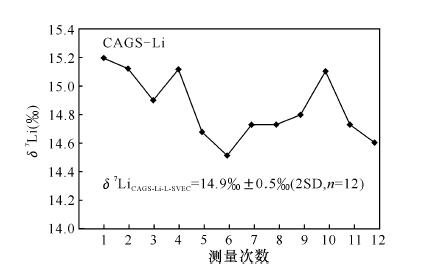
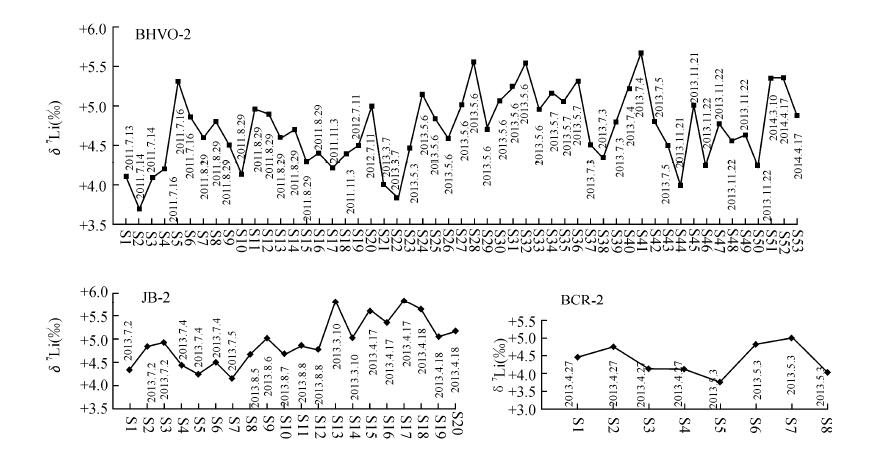
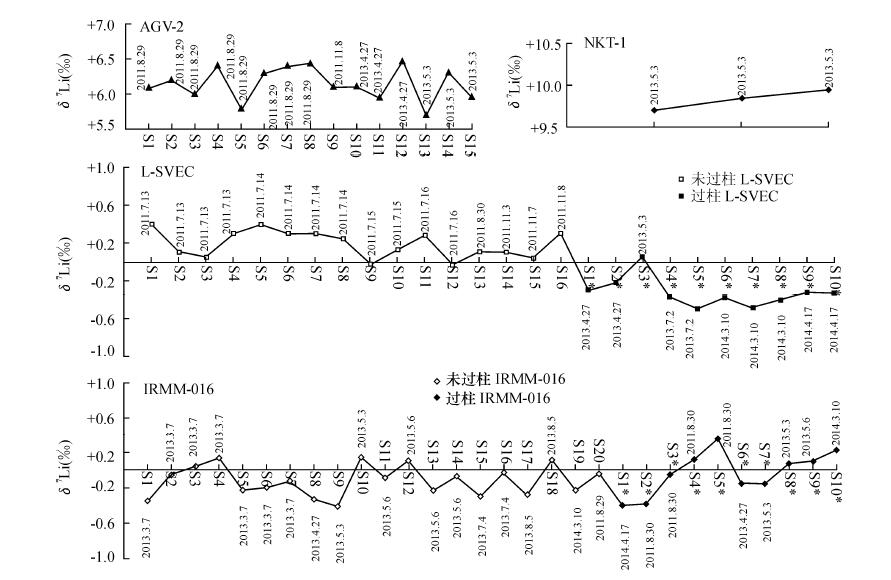
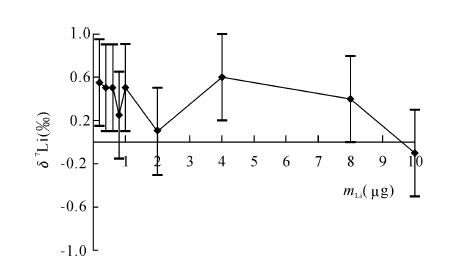
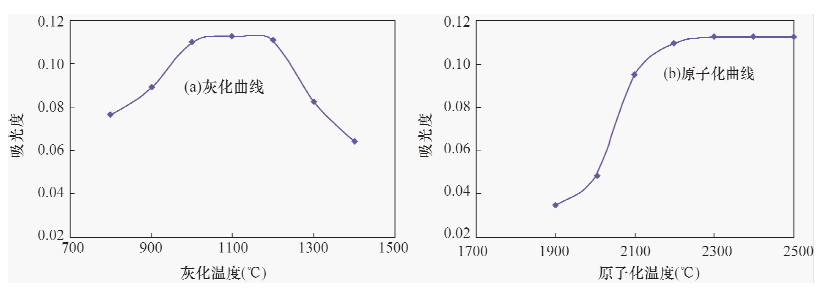
 京公网安备 11010202008159号
京公网安备 11010202008159号